The Art of Research: Photo Gallery 2018 – 19
The Art of Research photo contest is an opportunity for Queen’s faculty, students, staff, and alumni to showcase their research, scholarly, and artistic work. The competition is aimed at providing a creative and accessible method of sharing and celebrating the ground-breaking research being done by current and past Queen’s community members.
Love Under the Microscope
Dalila Villalobos
As pathologists in training, we are constantly reminded that both human cellular responses and the most deadly medical conditions can be unexpectedly beautiful under the microscope.
We are trained to be detail oriented and to understand disease in all its forms because abnormalities will only present to the eye that knows what to look for.
This photo captures a normal prostatic gland with its characteristic double layer and irregular branching.
The moment we diagnose a benign condition in a patient that is anxiously awaiting results is always rewarding. But, if, on top of that, we see heart-shape glands, it is inspiration.
Location of photograph:
Kingston Health Sciences Centre
Affiliation:
MD, Resident, Anatomical Pathology
Submission Year:
2018-19
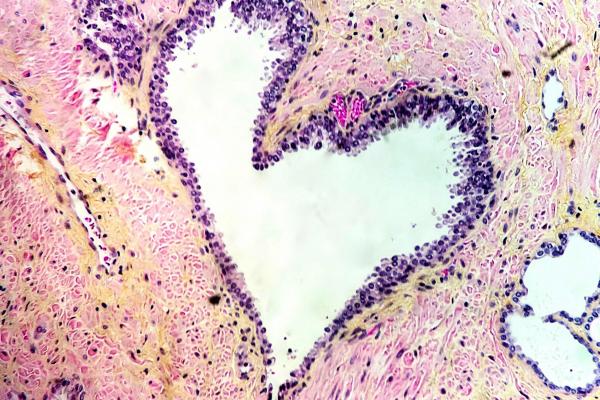
Keep Cool Boy - The Jets Aloft in West Side Story
Tim Fort
In a rare moment, before a Franz Kline-inspired setting, the Jets achieve a perfectly synchronized lift-off in this production of West Side Story mounted in celebration of Leonard Bernstein's 100th birthday. After forty-six seasons at the Weston Playhouse in Vermont, this production also represented my 60th (and final) happy entanglement directing mostly musical theatre works on the playhouse's historical stage. Twenty-seven performers – from newly minted conservatory graduates to Broadway veterans – enabled this epic work to fly.
Location of photograph:
Weston Playhouse, Vermont
Affiliation:
Faculty, Dan School of Drama and Music
Submission Year:
2018-19

Nano-dendrite Collision
Hannah Dies
This scanning electron microscopy image depicts branched gold nanostructures (“nano-dendrites”) growing from planar microelectrode tips and crashing halfway, buckling upwards to create a third dimension of nano-features. The structures assemble from gold nanoparticles under the influence of an applied electric field, similar to how iron filings assemble under the influence of a magnetic field. The gold nanoparticle building blocks are 50nm in diameter – about 5000 times smaller than a human hair. The branched network formed by these nanostructures promotes incredible sensitivity for small molecule detection by means of Raman spectroscopy. At the QuSENS laboratory, and with the startup company Spectra Plasmonics Inc., we use these nanostructures to detect illicit drugs, pesticides, and explosives at ultralow and societally relevant concentrations.
Location of photograph:
Dupuis Hall, Queen's University
Affiliation:
MD/PhD Student, Chemical Engineering
Submission Year:
2018-19

A New Light
Robert Cichocki
Tired of seeing roads being dug up to replace aging pipe infrastructure? Civil engineering research at Queen’s is bringing a new light to innovative, no-dig rehabilitation techniques. In this image, a UV light train is being prepared to help rehabilitate the adjacent corrugated steel pipe. The inside of the pipe has been lined with a fabric fibreglass tube embedded with UV cure resin. When the light train passes through the tube, the UV cures the resin solid and transforms the fabric tube into a solid liner. The new liner and pipe will further undergo buried experiments that will bring new insight into the structural behaviour of these systems.
Location of photograph:
GeoEngineering lab, Queen's University
Affiliation:
PhD Student, Civil Engineering
Submission Year:
2018-19
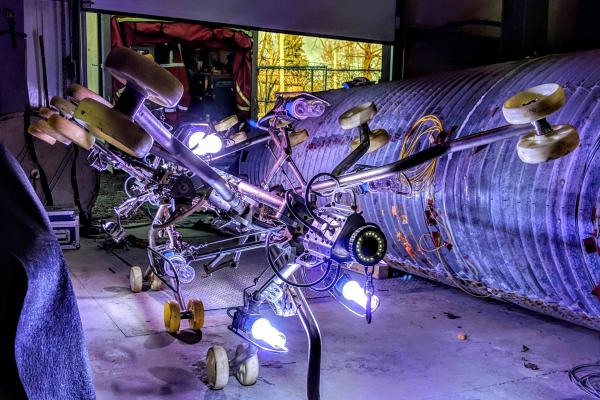
Learning to Live (Not Walking in Line)
Theodore Christou
The history of research and scholarship in education is a record of our efforts to make sense of the world.
How ought we to live? What should we learn, embrace, and resist?
From antiquity to anarchism, or, from Aristotle to Pink Floyd, we have known that we should never confuse schooling with education. Schools, whether they are traditional, progressive, colonial, or transgressive, have all been instruments of oppression as well as resistance.
Location of photograph:
Wall graffiti in Thessaloniki, Greece
Affiliation:
Faculty, Faculty of Education (Cross-appointment, History)
Submission Year:
2018-19

Lights, Camera, Action: Wolfie's Story
Marian Luctkar-Flude
"Lights, Camera, Action: Wolfie's Story" is a photo depicting the filming of a virtual simulation game about an older gay man grieving the loss of his partner of over 30 years. The game is part of the "Make it Better for All" Developing and Evaluating Sexual Orientation and Gender Identity Nursing Virtual Simulation Games project, led by Dr. Marian Luctkar-Flude, an assistant professor in the School of Nursing. This innovative CIHR-funded research project aims to develop and evaluate a series of virtual simulation games to provide education for nurses and nursing students on Sexual Orientation and Gender Identity (SOGI). Four full games and four mini-games will be hosted on the SOGI-Nursing website along with other resources to promote cultural humility in nursing interactions with LGBTQI2S persons. The research project will evaluate the pedagogical value of using virtual simulation games to educate nurses and nursing students.
Location of photograph:
Glaxo Wellcome Clinical Education Centre, Queen's University
Affiliation:
Faculty, School of Nursing
Submission Year:
2018-19
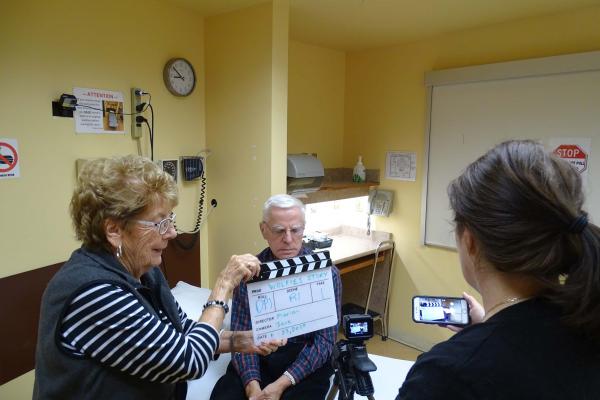
First Emergence
Ivana Schoepf
My research focuses on the effects that avian malarial parasites have on female reproductive success and offspring quality. To assess how malarial infection affects mothers and their offspring, I spent the spring and summer in the field at the Queen's University Biological Station catching female, adult red-winged blackbirds and treating them with either an antimalarial medication or a control solution. Female reproductive success was determined by looking at a variety of parameters, including incubation behaviour, which was measured using I-buttons (as seen in the photo). If experimental reduction of infection leads to higher reproductive success in females, I expected to find medicated females to be able to spend more time incubating their eggs. Our preliminary analysis shows that this is indeed the case.
Location of photograph:
Queen's University Biological Station
Affiliation:
Post-Doctoral Fellow, Biology
Submission Year:
2018-19
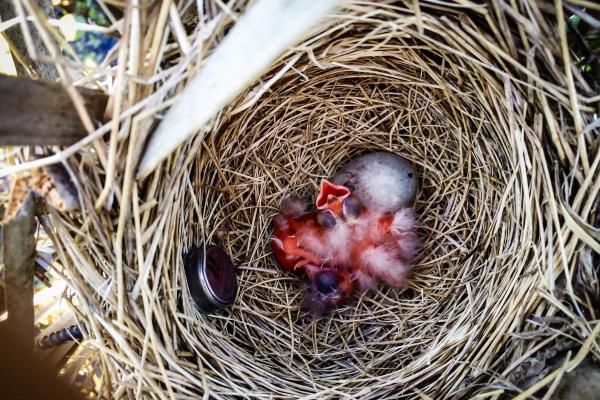
Women in Mathematics
Stefanie Knebel
Mathematical thinking is about finding patterns and structure. As a woman in the mathematics PhD program, I hope to inspire young women to follow their passion and find beauty in mathematics. At Queen’s, we offer the MathQuest camp for high school girls. As captured in the photo, I am brainstorming ways to teach game theory and linear algebra. This is also a part of my research with Dr. Peter Taylor, working with teachers across Ontario to look for innovative ways to incorporate mathematical thinking in education. We hope to change the math curriculum by making it a more engaging, positive, and memorable experience.
Location of photograph:
Jeffrey Hall, Queen's University
Affiliation:
PhD Student, Mathematics and Statistics
Submission Year:
2018-19
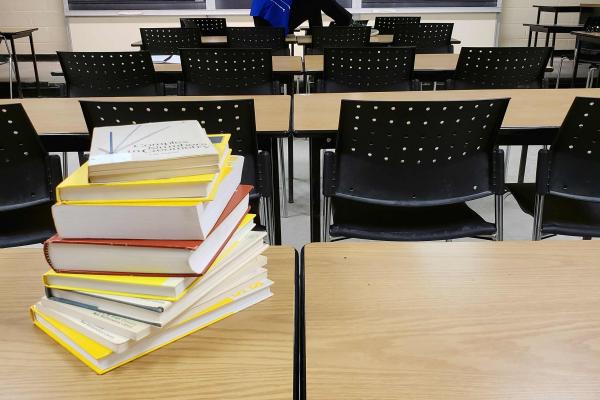
Twitter description:
Queen's Art of Research photo contest is an opportunity for Queen’s faculty, students, staff, and alumni to showcase their research, scholarly, and artistic work.
Facebook description:
Queen's Art of Research photo contest is an opportunity for Queen’s faculty, students, staff, and alumni to showcase their research, scholarly, and artistic work.

![[Art of Research photo by Fei Chen]](https://www.queensu.ca/research/sites/all/modules/contrib/lazyloader/image_placeholder.gif)